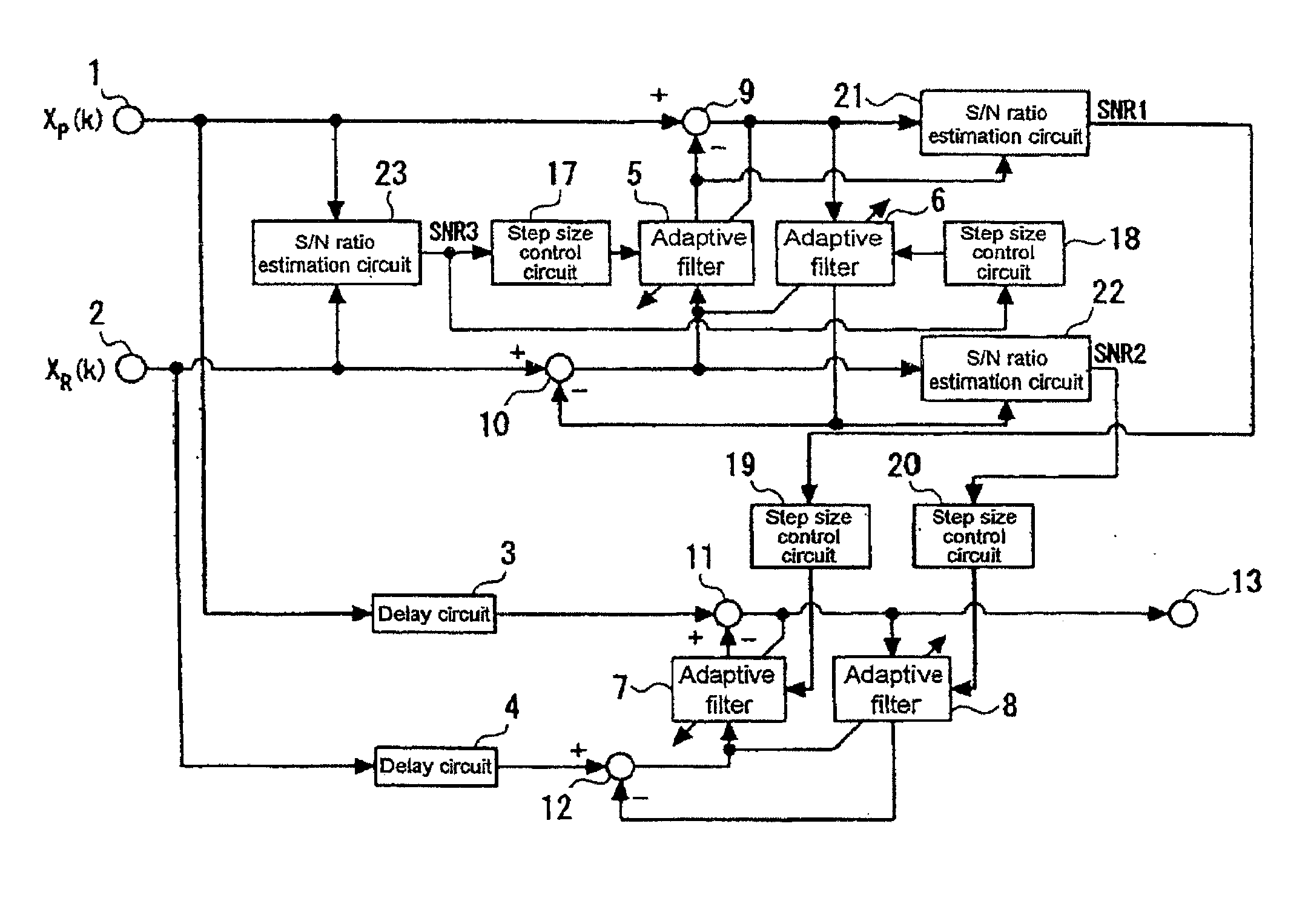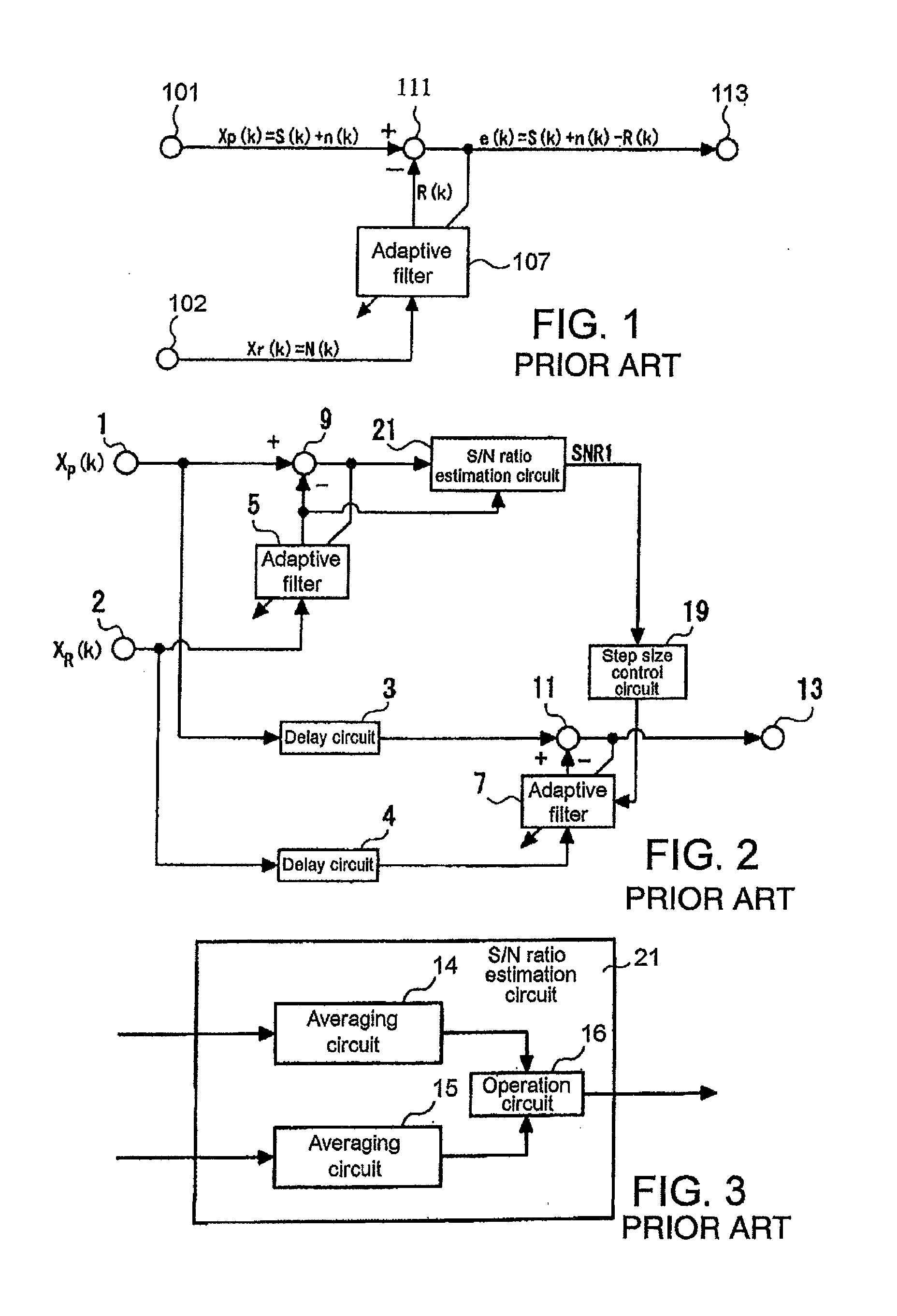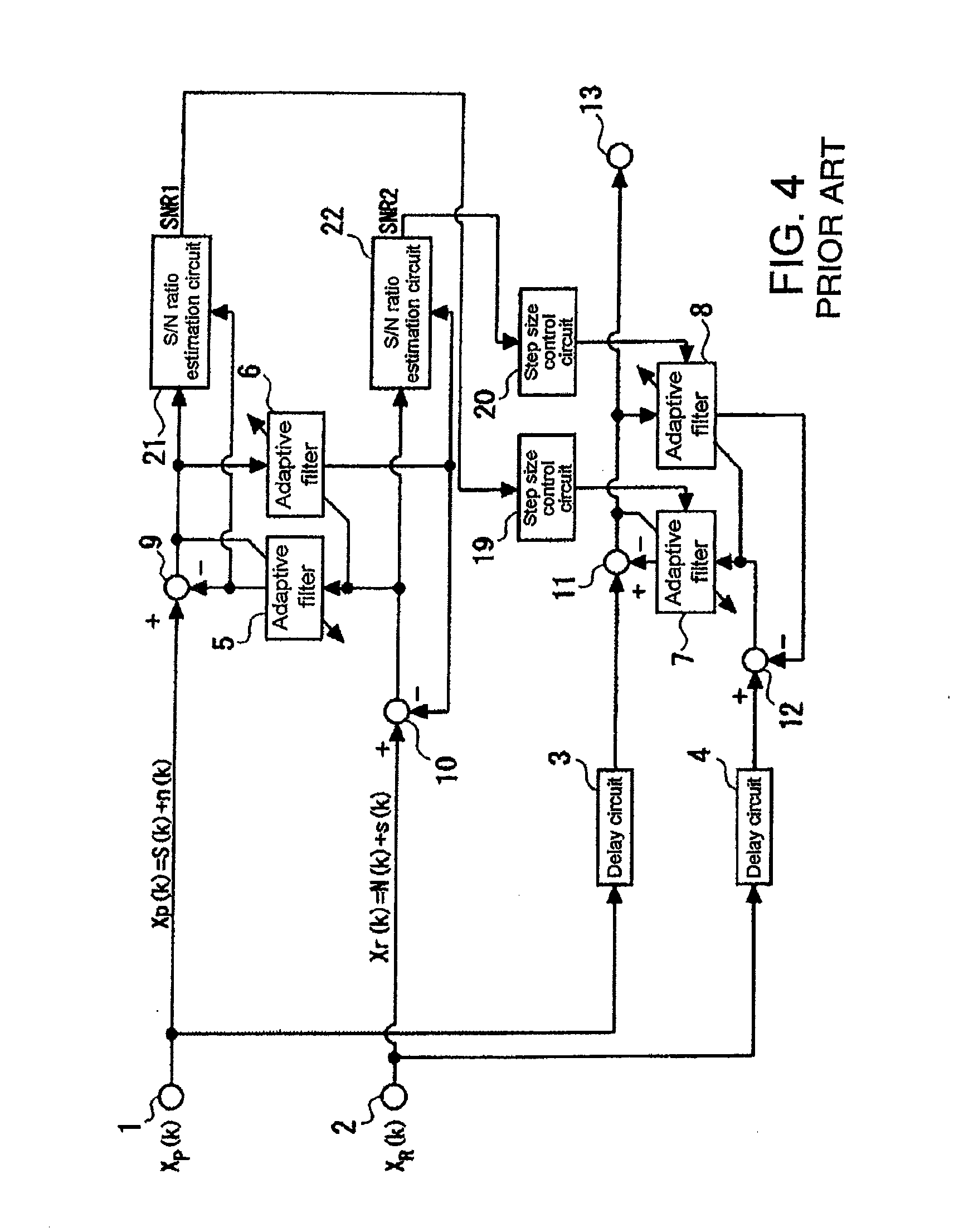Signal processing method and device
a signal processing and signal processing technology, applied in the field of signal processing methods and signal processing devices, can solve the problems of large convergence time required, serious problems in background noise signals mixed with speech signals, and large final residual errors, and achieve the effect of short convergence time and little distortion in output speech
- Summary
- Abstract
- Description
- Claims
- Application Information
AI Technical Summary
Benefits of technology
Problems solved by technology
Method used
Image
Examples
first embodiment
[0095]The following explanation regards the best modes of working the present invention. The following explanation takes as an example a form of a signal processor according to the present invention that is realized as a device for processing speech signals, and in particular, as a noise canceller. Nevertheless, it will be obvious that the signal processors of each of the following embodiments can be used as various types of signal processors other than noise cancellers without altering the configuration of the signal processors. The signal processor of the present invention shown in FIG. 5 is provided with: speech input terminal 1; reference input terminal 2; output terminal 13; first delay circuit 3 for receiving first received sound signal XP(k) which is received from speech input terminal 1 and conferring to the first received sound signal a delay time that has been determined in advance to generate a first delayed received sound signal; second delay circuit 4 for receiving a se...
second embodiment
[0134]The signal processor of the second embodiment that is shown in FIG. 6 is provided with: speech input terminal 1; reference input terminal 2; output terminal 13; first delay circuit 3 for receiving first received sound signal XP(k) as input from speech input terminal 1 and giving a predetermined delay time to the first received sound signal to generate a first delayed received sound signal; second delay circuit 4 for receiving second received sound signal XR(k) as input from reference input terminal 2 and giving a delay time that is the same as that of first delay circuit 3 to second received sound signal to generate second delayed received sound signal; first subtractor 11 for subtracting a first pseudo noise signal from the first delayed received sound signal to generate a first error signal; second subtractor 12 for subtracting the first pseudo speech signal from the second delayed received sound signal to generate a second error signal; first adaptive filter 7 for receiving...
third embodiment
[0144]The signal processor of the third embodiment that is shown in FIG. 7 is provided with: speech input terminal 1; reference input terminal 2; output terminal 13; first delay circuit 3 for receiving first received sound signal XP(k) as input from speech input terminal 1 and giving a predetermined delay time to the first received sound signal to generate a first delayed received sound signal; second delay circuit 4 for receiving second received sound signal XR(k) which is received from reference input terminal 2 and giving the second received sound signal the same delay time as first delay circuit 3 to generate a second delayed received sound signal; first subtractor 11 for subtracting a first pseudo noise signal from the first delayed received sound signal to generate a first error signal; second subtractor 12 for subtracting the first pseudo speech signal from the second delayed received sound signal to generate a second error signal; first adaptive filter 7 for receiving the se...
PUM
 Login to View More
Login to View More Abstract
Description
Claims
Application Information
 Login to View More
Login to View More - R&D
- Intellectual Property
- Life Sciences
- Materials
- Tech Scout
- Unparalleled Data Quality
- Higher Quality Content
- 60% Fewer Hallucinations
Browse by: Latest US Patents, China's latest patents, Technical Efficacy Thesaurus, Application Domain, Technology Topic, Popular Technical Reports.
© 2025 PatSnap. All rights reserved.Legal|Privacy policy|Modern Slavery Act Transparency Statement|Sitemap|About US| Contact US: help@patsnap.com



